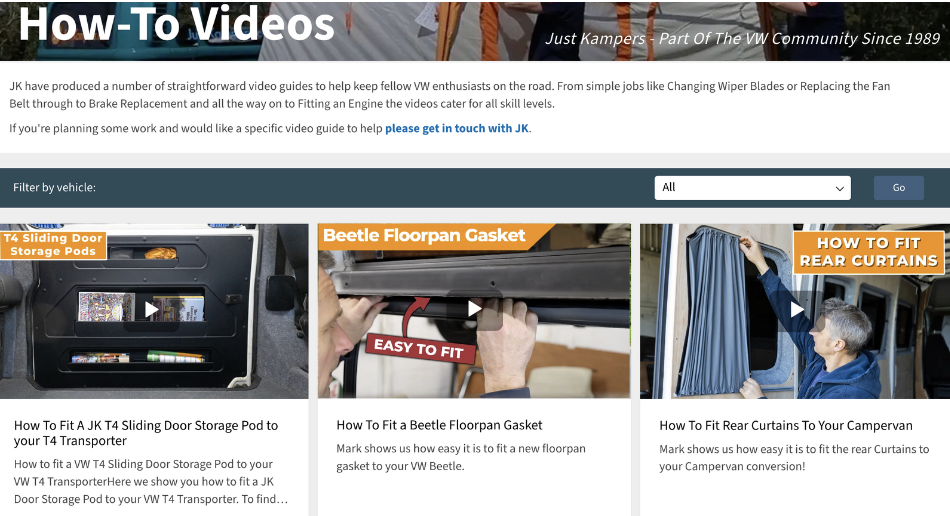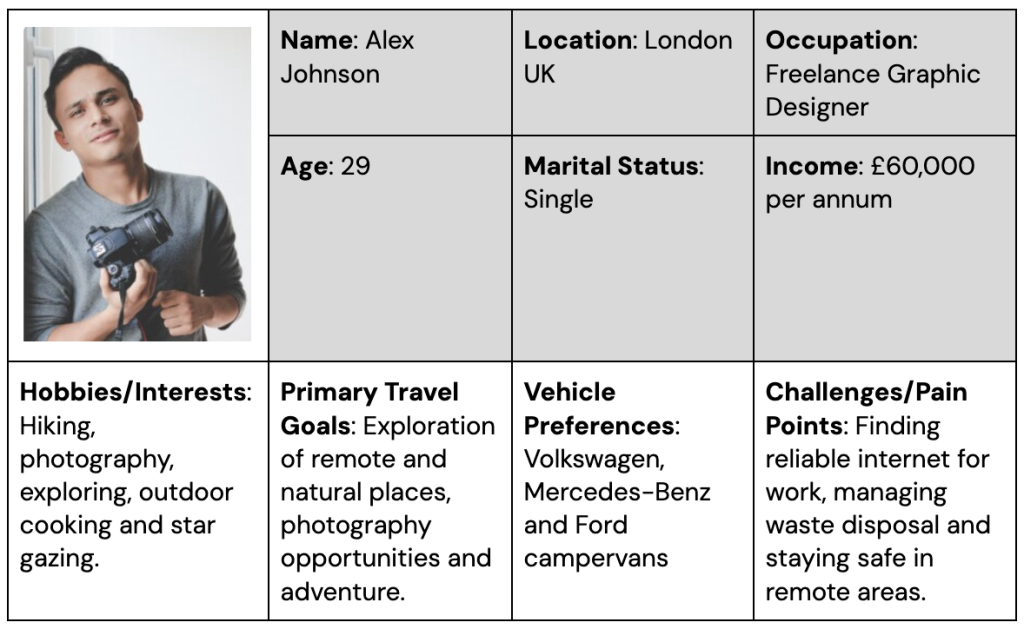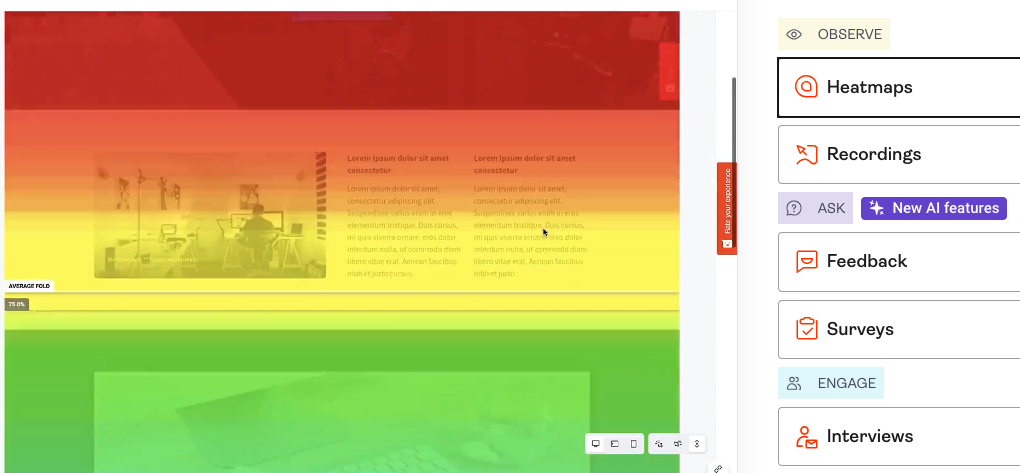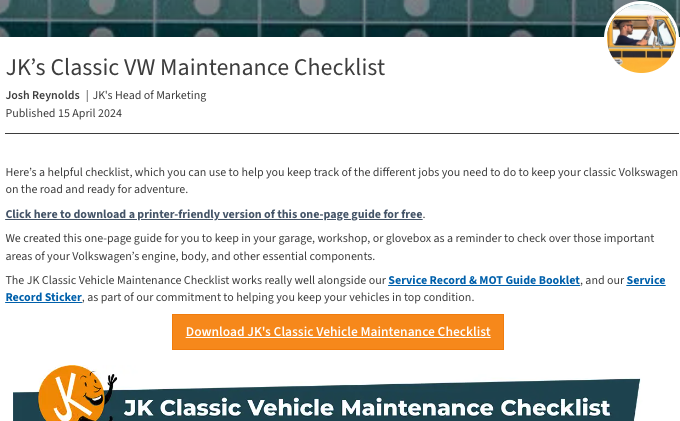Creating high-quality, valuable content is a surefire way to encourage users to convert. However, there are some steps that we recommend to improve your chances of users converting.
In this article, we’ll equip you with some strategies you can utilise to increase the likelihood of your content converting users. But first, we need to understand the psychology behind the buyer journey to understand how you can optimise your content marketing strategies to convert users at the right time.
As humans, we resonate with real-life stories, emotions and problem-solving. By creating content that taps into how your audience is feeling, you can increase your chances of your audience converting, as they resonate with your content.
If we take Peter Nyssen as an example, they provide detailed planting blogs with step-by-step guides, tips and considerations and videos from the author to show that the author of their blogs is a topical thought leader. This not only indicates that they are trustworthy experts in their field (no pun intended), but they are also providing users with a solution to issues that users may encounter when purchasing bulbs or plants from Peter Nyssen.
Another element of creating content that converts is to ensure that it aligns with where the user is in their buyer journey. As shown in the table below, a purchasing journey is broken up into awareness, consideration and decision. To effectively drive conversions, aligning your content with the buyer’s journey is essential.
Users have identified they have a problem or issue. This stage is ideal for creating informative articles like how-to guides and FAQ sections in category or product pages.
Users are actively researching and evaluating different solutions. This stage is ideal for creating content like case studies, white papers and product comparisons.
Users are ready to make a purchase. Content such as product demonstrations can help drive the final conversion.
When it comes to writing content, not all content is designed to directly drive conversions, as shown in the buyer journey table. If you want to encourage readers to convert, you need to encourage users to make the decision by ensuring that the primary keyword of the content matches either commercial or transactional intent. This way, your content has the best chance of converting readers as they are already close to making a purchase in the buyer journey.
Read more: Improve content performance for organic search.
Now that you’ve identified your keyword, let’s take a look at which content has the best chance of driving conversions.
Informative blogs are an easy way to drive conversions. By providing solutions to the pain points and challenges of your target audience, you can establish yourself as a trusted source of information and build credibility. If users trust that you’re a credible source of information, they’re likely to make a conversion based on the solution in your blog.
Wood2U’s blogs, for example, provide solutions to many issues that their target audience may have. Their Laminate vs Engineered Wood Flooring blog in particular looks at 2 popular flooring types, comparing the differences to suit their users’ needs. Throughout the article, they include links to relevant categories, as well as providing users with a clear summary of the article and a clear call to action (CTA) to encourage readers to take a look a their flooring range.
Videos are another effective way to increase conversions. They allow you to demonstrate the value of your products or services in a visually engaging and persuasive way.
Below, we have added an example of how Just Kampers, a classic Volkswagen parts specialist, have used videos as part of their content marketing strategy to increase the likelihood of users purchasing their products.

If you don’t already have an audience that you want to target your content towards, we can help. At Proof3, we will conduct market research to understand who your customers are, we will then use this data to build up buyer personas that represent your ideal customers. Below we have added a simplified version of what a typical persona could look like.

By clearly defining your target audience, you can create content that directly addresses their needs and desires, increasing the likelihood of converting them into customers.
Now that we’ve identified who we’re writing for, we can dig into keyword research for the content. At Proof3, we have access to a variety of free and paid tools and platforms to conduct in-depth keyword research. Typically, we will use Google Keyword Planner to identify to find the most relevant keyword with the highest search volume and low competition. We will then use paid tools like SEMrush to identify additional terms and questions that people search for to ensure that we’re covering what users want to see.
Conducting thorough keyword research ensures that the content is seen by more people, ultimately increasing the chances of readers converting.
Remember: content should be written for users first. Keywords and their variations should be used in a way that reads naturally, providing value to users.
The best way to draw the attention of a reader is by crafting compelling headlines and introductions. These are the first impressions that you make on your audience, so they must be written in a way that will encourage them to continue reading. Once you have their attention, it’s a lot easier to get them to continue reading and click the links within your article to find out more information.
Strategies that we use to capture the attention of your target audience can include:
Using descriptive language.
Highlight the key benefits or solutions your content provides.
Incorporate numbers, statistics or intriguing questions.
Tailor your headlines and introductions to your target audience’s preferences and pain points.
Test different headlines and introductions to see which ones perform better.
As previously mentioned, helpful, reliable and people-first, reliable and people-first, but it’s important to not neglect search engine optimisation (SEO). SEO ensures that your content appears in the search results. Without proper SEO, your content may struggle to gain visibility with your target audience.
Although we’ve touched on a few elements of SEO like using keywords throughout headings and copy, there are some other SEO elements to remember:
Write compelling meta titles and descriptions that entice users to click on your content.
Headings should be descriptive to make your content more scannable and user-friendly.
Include relevant internal and external links to provide additional information. For example, if the goal of your content is to encourage readers to purchase a particular product or fill out a form, it’s important to link to these pages to encourage readers to complete an action.
Optimise your website’s loading speed and mobile responsiveness to improve user experience.
When creating content on your site, it’s important to utilise other marketing channels to increase your brand’s visibility online, engage with your audience and, ultimately drive conversions. If users aren’t regularly browsing your site, they may not be aware of the new content that is being published on your site.
Social media is a fantastic way to promote your content, as you’ve already got a loyal audience who are more likely to share and engage with your content. Here are some key social media strategies to distribute your content:
Choose the right social media platform where your target audience is most active. For example, if you’re targeting a B2B audience, LinkedIn may be a more effective platform than Facebook. If you’re a flooring company, you might benefit from posting visual content on Instagram. It’s all about knowing where your audience is.
Create a content calendar to plan and schedule your social media posts. If you’re publishing a regular blog, align your social media posts to encourage your audience to read the new article.
Content should capture attention, provide value and be engaging to encourage users to share the content.
Use relevant hashtags and keywords in your social media posts. This will increase visibility for users looking for content around a specific topic.
Engage with your audience and encourage discussions.
HotJar is a fantastic example of how to encourage users to convert. They’re a B2B company that provides businesses with ways to see what users on the website are interested in. By using terms like ‘solutions’ and ‘get started free’, businesses are provided with solutions to issues that they may not realise they had, at no extra charge.

They also provide users with a snippet of what HotJar can do, with a visual to explain how each feature works. This gives users a better understanding of the benefits that they can get, without having to test it on their site.

Just Kampers has mastered the art of creating content that converts. If we take JK’s Classic VW Maintenance Checklist blog as an example, they’ve provided readers with a solution to an issue by explaining what classic VW owners should check on their vehicles and when. They’ve even included clickable and relevant links, a downloadable checklist and demonstrational videos.
Using an image of the author and their role within the company also reflects Google’s E-E-A-T guidelines which reassures both users and search engines that the site is credible and reliable.

